#canon era les mis
Text
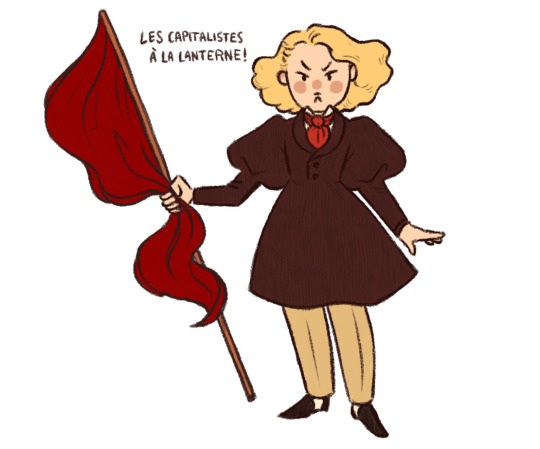
today I offer you tiny Enjolras, tomorrow, who knows?
(also for the translation: « les capitalistes à la lanterne! » or “capitalists to the lamp post!” uses the french revolutionary expression “to the lampost”, basically calling for ppl to be hanged… If you’re at all familiar with french revolution songs it’s most famous in a line from le Ça Ira, «les aristocrates à la lanterne »… so, the more you know!)
#les mis#les miserables#les miz#les amis de l'abc#the brick#musical theatre#enjolras#les mis headcanons#les mis fanart#enjoltaire#exr#les mis canon era#canon era les mis
302 notes
·
View notes
Text
hey les mis folks:
If I cant find anything I might ask pilferingapples but
does anyone know where to find a pattern for an at least semi accurate shirt from around the 1830s?
actually buying replicas is expensive but the shirt feels fairly simple and I can sew pretty well.
The best case scenario is an actual vintage pattern from the era, but I'll take a modern one too
#its EXPENSIVE buying replicas but I can sew and have a good sewing machine#maybe at some point i'll sew a waistcoat as well cause also /expensive/ but that would probably be a lot of work#les mis#canon era les mis#1830s fashion#fashion history#historical dress#1830s#i know theres a few websites ive seen people talking about that have a lot of old patterns and shit but i dont remember what its called
12 notes
·
View notes
Text


they were schoolboys, never held a
#very rare thing happened i actually drew a les a#amis group picture#i dont see their designs as clearly im my head as a modern era version#but sometimes a good old canon era doesnt hurt#i have been drawing this picture this last winter#redraw it like 19 times actually#art#fanart#artist#my art#les mis#les miserables#les miserables fanart#les amis de l'abc#enjoltaire#enjolras#grantaire#combeferre#courfeyrac#marius pontmercy#les amis#les amis fanart#canon era#artist on tumblr
518 notes
·
View notes
Text
Les Mis French History Timeline: all the context you need to know to understand Les Mis
Here is a simple timeline of French history as it relates to events in Les Miserables, and to the context of Les Mis's publication!
A post like this would’ve really helped me four years ago, when I knew very little about 1830s France or the goals of Les Amis, so I’m making it now that I have the information to share! ^_^
This post will be split into 4 sections: a quick overview of important terms, the history before the novel that’s important to the character's backstories, the history during the novel, and then the history relevant to the 1848-onward circumstances of Hugo’s life and the novel’s publication.
Part 1: Overview
The novel takes place in the aftermath of the Battle of Waterloo, during a period called the Restoration.
The ancient monarchy was overthrown during the French Revolution. After a series of political struggles the revolutionary government was eventually replaced by an empire under Napoleon. Then Napoleon was defeated and sent into exile— but then he briefly came back and seized power for one hundred days—! and then he was defeated yet again for good at the battle of Waterloo in 1815.
After all that political turmoil, kings have been "restored" to the throne of France. The novel begins right as this Restoration begins.
The major political parties important to generally understanding Les Mis (Wildly Oversimplified) are Republicans, Liberals, Bonapartists, and Royalists. It’s worth noting that all these ‘party terms’ changed in meaning/goals over time depending on which type of government was in power. In general though, and just for the sake of reading Les Mis:
Republicans want a Republic, where people elect their leaders democratically— they’re the very left wing progressive ones, and are heavily outcast/censored/policed. Les Amis are Republicans.
Liberals are (iirc) actually the most powerful “leftist” group at the time; they generally want limits on monarchical power but don’t go as far as Republicans.
Bonapartists are followers of Napoleon Bonaparte I, who led the Empire. Many viewed the Emperor as more favorable or progressive to them than a king would be. Georges Pontmercy is a Bonapartist, as is Pere Fauchelevent.
Royalists believe in the divine right of Kings; they’re conservative. Someone who is extremely royalist to the point of wanting basically no limits on the king’s power at all are called “Ultraroyalists” or “ultra.” Marius’s conservative grandfather Gillenromand is an ultra royalist.
Hugo is also very concerned with criticizing the "Great Man of History," the view that history is pushed forward by the actions of a handful of special great men like kings and emperors. Les Mis aims to focus on the common masses of people who push history forward instead.
Part 2: Timeline of History involved in characters’ Backstories
1789– the March on the bastille/ the beginning of the original French Revolution. A young Myriel, who is then a shallow married aristocrat, flees the country. His family is badly hurt by the Revolution. His wife dies in exile.
1793– Louis XVI is found guilty of committing treason and sentenced to death. The Conventionist G—, the old revolutionary who Myriel talks to, votes against the death of the king.
1795: the Directory rules France. Throughout much of the revolution, including this period, the country is undergoing “dechristianization” policies. Fantine is born at this time. Because the church is not in power as a result of dechristianization, Fantine is unbaptized and has no record of a legal given name.
1795: The Revolutionary government becomes more conservative. Jean Valjean is arrested.
1804: Napoleon officially crowns himself Emperor of France. the Revolution’s dream of a Republic is dead for a bit. At this time, Myriel returns from his exile and settles down in the provinces of France to work as a humble priest. Then he visits Paris and makes a snarky comment to Napoleon, and Napoleon finds him so witty that he appoints him Bishop.
Part 3: the novel actually begins
1815: Napoleon is defeated at the Battle of Waterloo by the allied nations of Britain and Prussia. Read Hugo’s take on that in the Waterloo Digression! He gets a lot of facts wrong, but that’s Hugo for you.
Marius’s father, Baron Pontmercy, nearly dies on the battlefield. Thenardier steals his belongings.
After Napoleon is defeated, a king is restored to the throne— Louis XVIII, of the House of Bourbon, the ancient royal house that ruled France before the Revolution. In order to ensure that Louis XVIII stays on the throne, the nations of Britian, Prussia, and Russia, send soldiers occupy France. So France is, during the early events of the novel, being occupied by foreign soldiers. This is part of why there are so many references to soldiers on the streets and garrisons and barracks throughout the early portions of the novel. The occupation officially ended in 1818.
1815 (a few months later): Jean Valjean is released from prison and walks down the road to Digne, the very same road Napoleon charged down during his last attempt to seize power. Many of the inns he passes by are run by people advertising their connections to Napoleon. Symbolically Valjean is the poor man returning from exile into France, just as Napoleon was the Great Man briefly returning from exile during the 100 days, or King Louis XVIII is the Great King returning from exile to a restored throne.
1817: The Year 1817, which Hugo has a whole chapter-digression about. Louis XVIII of the House of Bourbon is on the throne. Fantine, “the nameless child of the Directory,” is abandoned by Tholomyes.
1821: Napoleon dies in exile.
1825: King Louis XVIII dies. Charles X takes the throne. While Louis XVIII was willing to compromise, Charles X is a far more conservative ultra-royalist. He attempts to bring back the Pre-Revolution style of monarchy.
Underground resistance groups, including Republican groups like Les Amis, plot against him.
1827-1828: Georges Pontmercy, bonapartist veteran of Waterloo, dies. Marius, who has been growing up with his abusive Ultra-royalist grandfather and mindlessly repeating his ultra-royalist politics, learns how much his father loved him. He becomes a democratic Bonapartist.
Marius is a little bit late to everything though. He shouts “long live the Emperor!” Even though Napoleon died in 1821 and insults his grandfather by telling him “down with that hog Louis XVIII” even though Louis XVIII has been dead since 1825. He’s a little confused but he’s got the spirit.
Marius leaves his grandfather to live on his own.
1830: “The July Revolution,” also known as the “Three Glorious Days” or “the Second French Revolution.” Rebels built barricades and successfully forced Charles X out of power.
Unfortunately, TL;DR moderate politicians prevented the creation of a Republic and instead installed another more politically progressive king — Louis-Philippe, of the house of Orleans.
Louis-Philippe was a relative of the royal family, had lived in poverty for a time, and described himself as “the citizen-king.” Hugo’s take on him is that he was a good man, but being a king is inherently evil; monarchy is a bad system even if a “good” dictator is on the throne.
The shadow of 1830 is important to Les Mis, and there’s even a whole digression about it in “A Few Pages of History,” a digression most people adapting the novel have clearly skipped. Les Amis would’ve probably been involved in it....though interestingly, only Gavroche and maybe Enjolras are explicitly confirmed to have been there, Gavroche telling Enjolras he participated “when we had that dispute with Charles X.”
Sadly we're following Marius (not Les Amis) in 1830. Hugo mentions that Marius is always too busy thinking to actually participate in political movements. He notes that Marius was pleased by 1830 because he thinks it is a sign of progress, but that he was too dreamy to be involved in it.
1831: in “A Few Pages of History” Hugo describes the various ways Republican groups were plotting what what would later become the June Rebellion– the way resistance groups had underground meetings, spread propaganda with pamphlets, smuggled in gunpowder, etc.
Spring of 1832: there is a massive pandemic of cholera in Paris that exacerbates existing tensions. Marius is described as too distracted by love to notice all the people dying of cholera.
June 1st, 1832: General Lamarque, a member of parliament often critical of the monarchy, dies of cholera.
June 5th and 6th, 1832: the June Rebellion of 1832:
Republicans, students, and workers attempt to overthrow the monarchy, and finally get a democratic Republic For Real This Time. The rebellion is violently crushed by the National Guard.
Enjolras was partially inspired by Charles Jeanne, who led the barricades at Saint-Merry.
Part 4: the context of Les Mis’s publication
February 1848: a successful revolution finally overthrows King Louis Philippe. A younger Victor Hugo, who was appointed a peer of France by Louis-Philippe, is then elected as a representative of Paris in the provisional revolutionary government.
June 1848: This is a lot, and it’s a thing even Hugo’s biographers often gloss over, because it’s a horrific moral failure/complexity of Hugo’s that is completely at odds with the sort of politics he later became known for. The short summary is that in June 1848 there was a working-class rebellion against new unjust labor laws/forced conscription, and Victor Hugo was on the “wrong side of the barricades” working with the government to violently suppress the rebels. To quote from this source:
Much to the disappointment of his supporters, in [Victor Hugo’s] first speech in the national assembly he went after the ateliers or national workshops, which had been a major demand of the workers. Two days later the workshops were closed, workers under twenty-five were conscripted and the rest sent to the countryside. It was a “political purge” and a declaration of war on the Parisian working class that set into motion the June Days, or the second revolution of 1848—an uprising lauded by Marx as one of the first workers’ revolutions. As the barricades went up in Paris, Hugo was tragically on the wrong side. On June 24 the national assembly declared a state of siege with Hugo’s support.
Hugo would then sink to a new political low. He was chosen as one of sixty representatives “to go and inform the insurgents that a state of siege existed and that Cavaignac [the officer who had led the suppression of the June revolt] was in control.” With an express mission “to stop the spilling of blood,” Hugo took up arms against the workers of Paris. Thus, Hugo, voice of the voiceless and hero of workers, helped to violently suppress a rebellion led by people whom he in many ways supported—and many of whom supported him. With twisted logic and an even more twisted conscience, Hugo fought and risked his life to crush the June insurrection.
There is an otherwise baffling chapter in Les Mis titled "The Charybdis of the Faubourg Saint Antoine and the Scylla of the Fauborg Du Temple," where Hugo goes on a digression about June of 1848. Hugo contrasts June of 1848 with other rebellions, and insists that the June 1848 Rebellion was Wrong and Different. It is a strangely anti-rebellion classist chapter that feels discordant with the rest of the book. This is because it is Hugo's effort to (indirectly) address criticisms people had of his own involvement in June 1848, and to justify why he believed crushing that rebellion with so much force was necessary. The chapter is often misused to say that Hugo was "anti-violent-rebellion all the time" (which he wasn't) or that "rebellion is bad” is the message of Les Mis (which it isn't) ........but in reality the chapter is about Hugo attempting to justify his own past actions to the reader and to himself, actions which many people on his side of the political spectrum considered a horrible betrayal. He couldn't really have written a novel about the politics of barricades without addressing his actions in June 1848, and he addressed them by attempting to justify them, and he attempted to justify them with a lot of deeply questionable rhetoric.
1848 is a lot, and I don't fully understand all the context yet-- but that general context is necessary to understand why the chapter is even in the novel.
Late 1848/1849:
Quoting from the earlier source again:
In the wake of the revolution, Hugo tried to make sense of the events of 1848. He tried to straddle the growing polarization between, on the one hand, “the party of order,” which coalesced around Napoleon’s nephew Louis-Napoleon Bonaparte, who in December 1848 had been elected France’s president under a new constitution, and the “party of movement” (or radical Left) that, in the aftermath of 1848, had made considerable advances. In this climate, as Hugo increasingly spoke out, and faced opposition and repression himself, he was radicalized and turned to the Left for support against the tyranny and “barbarism” he saw in the government of Louis Napoleon.
The “point of no return” came in 1849. Hugo became one of the loudest and most prominent voices of opposition to Louis Napoleon. In his final and most famous insult to Napoleon, he asked: “Just because we had Napoleon le Grand [Napoleon the Great], do we have to have Napoleon le petit [Napoleon the small]?” Immune from punishment because of his role in the government, Bonaparte retaliated by shutting down Hugo’s newspaper and arresting both his sons.
Thenardier is likely meant to be Hugo’s caricature of Louis-Napoleon/Napoleon III. He is “Napoleon the small,” an opportunistic scumbag leeching off the legacy of Waterloo and Napoleon to give himself some respectability. He is a metaphorical ‘graverobber of Waterloo’ who has all of Napoleon’s dictatorial pettiness without any of his redeeming qualities.
It’s also worth noting that Marius is Victor “Marie” Hugo’s self-insert. Hugo’s politics changed wildly over time. Like Marius he was a royalist when was young. And like Marius, he looked up to Napoleon and to Napoleon III, before his views of them were shattered. This is reflected in the way Marius had complicated feelings of loyalty to his father (who’s very connected to the original Napoleon I) and to Thenardier (who’s arguably an analogue for Napoleon IiI.)
1851:
On December 2, 1851, Louis Napoleon launched his coup, suspending the republic’s constitution he had sworn to uphold. The National Assembly was occupied by troops. Hugo responded by trying to rally people to the barricades to defend Paris against Napoleon’s seizure of power. Protesters were met with brutal repression.
Under increasing threat to his own life, with both of his sons in jail and his death falsely announced, Hugo finally left Paris.
He ultimately ended up on the island of Guernsey where he spent much of the next eighteen years and where he would write the bulk of Les Misérables. It was from here that his most radical and political work was smuggled into France.
Hugo arguably did his most important political work after being exiled. In Guernsey, he aided with resistance against the regime of Napoleon III. Hugo’s popularity with the masses also meant that his exile was massive news, and a thing all readers of Les Miserables would’ve been deeply familiar with.
This is why there are so many bits of Les Mis where the narrator nostalgically reflects on how much they wish they were in Paris again —these parts are very political; readers would’ve picked up that this was Victor Hugo reflecting on he cruelty of his own exile.
1862-1863: Les Mis is published. It is a barely-veiled call to action against the government of Napoleon III, written about the June Rebellion instead of the current regime partially in order to dodge the censorship laws at the time.
Conservatives despise the book and call it the death of civilization and a dangerous rebellious evil godless text that encourages them to feel bad for the stupid evil criminal rebel poors and etc etc etc– (see @psalm22-6 ‘s excellent translations of the ancient conservative reviews)-- but the novel sells very well. Expressing approval or disapproval of the book is considered inherently political, but fortunately it remains unbanned.
…And that’s it! An ocean of basic historical context about Les Mis!
If anyone has any corrections or additions they would like to make, feel free to add them! I have researched to the best of my ability, but I don’t pretend to be perfect.
I also recommend listening to the Siecle podcast, which covers the events of the Bourbon Restoration starting at the Battle of Waterloo, if you're interested in learning more about the period!
#les mis#someone in a discord server asked about this a while back#so i put it together!#it’s basically what I told them in the discord server but as a tumblr post#and with some extra stuff I forgot to say#but yeAH maybe if more historical information gets spread#we’ll get more canon era fanfics >:3333#which are always fun
439 notes
·
View notes
Text

artist and muse
#CANON ERA BOYS#yeah grantaire sketches in the same way i would so what#les miserables#enjolras#grantaire#les mis#enjoltaire#exr#my art#digital art#artists on tumblr
173 notes
·
View notes
Text
To distract myself from the horrors of reality, I've been diving into Javert/Valjean fanfics. Some are lovely, some captivating, and some just silly but amusing. I've even found several favourite authors. While I'm fully aware that these interpretations of Javert and Valjean bear little resemblance to Hugo’s characters, they provide entertainment, feature some recognizable traits, and are often well-written. However, as a historian, I can't help but cringe at the anachronisms and messy everyday details that crop up.
I can overlook most of these issues, given the specific nature of fanfics. However, one recurring detail that baffles me is the frequent mention of TEA in almost every Valvert fanfic set in the canon era. I can take it that they eat porridge and eggs with bacon for breakfast – let it be, at least it doesn’t happen that often. But TEA?! In France? In the 1830s? At home? To indulge in tea drinking during this period, one would have to be either a crazy Anglophile or Sinophile. And one had to be rich to afford it. While it's true that the French did drink tea (Napoleon himself was a fan), it was largely limited to aristocrats or wealthy bourgeois. Valjean might qualify as the latter, but he wouldn't likely splurge on such a fancy beverage for himself. And let's not forget that tea required expensive porcelain tea sets.
Furthermore, tea was typically enjoyed outside the home in fashionable salons de thé, rather than being a household beverage like it was in Britain. So, if you're writing Valjean/Javert (or any Les Mis) fanfic, please reconsider having them drink tea. Water and/or wine would be a much more plausible choice. Or at least explain why they drink tea. Even coffee wouldn't be ideal, as it wasn't yet a common household beverage at that time. It was the Germans who first adopted the tradition of making coffee at home, as it was initially considered unsuitable for women.
#les miserables#valvert#les mis#fanfic#a historian's recommendations no one asked for#you're welcome#tea in canon era fanfics
73 notes
·
View notes
Note
Cosette in 13, if you don’t mind? The dark colors and the pale bright ones together suit her, I think

Goth Cosette be upon ye!!
Thank you for the ask! Prompt from this list.
#les mis#les miserables#my-art#asks#cosette#cosette fauchelevent#goth cosette#sorry I can only do canon era for so long#I'm a modern era hoe#also jesus christ the art bug hit today i managed to draw 3 whole things#wild#take THAT brain!!
179 notes
·
View notes
Text
im learning i have an intense fondness for historical gays. modern gays are good, but theres just Something about historical queers that hit my brain. bonus points if they're from the 17th-19th century.
#early 20th century hits hard too#maybe it has something to do with how little queer history we have easy access to from those time periods#bc yes we were there but it was criminalized and shamed to the point where not much remains for fear of being persecuted#maybe im getting too philisophical for my silly little queer tumblr post#anyways yes this was sparked bc of the new ofmd trailer#ofmd#blackbonnet#but also#les mis#enjoltaire#exr#lams#them too#dont look at me like that#canon era counts#shkutout to binch-i-might-be for their thin ice verse and all the other historical lams shit theyve got#S tier fics#historical fiction#queer history#thats my silly little tumblr post for the day
361 notes
·
View notes
Text

In our final week of shows we all came down to the theatre one night to take group shots from any major ensemble scenes in full costume, to make sure we could all appreciate the fully-lit efforts of the costume team for years to come.
This was our biggest group - the Beggars in Paris. It's still only about half of our cast. The full cast were genuinely never all in the same room at the same time!
#Cait Directs Les Mis#Community Theatre#Volunteers#I love everyone on this stage with my whole heart#Beggars#Les Miserables#Les Mis#Musical Theatre#Canon Era#Photography#cait makes
58 notes
·
View notes
Text

[ID: A crowded, saturated, digital drawing of Les Amis de l’ABC from “Les Miserables.” Bahorel and Jehan are chatting with Grantaire, who has an arm around Joly, who is talking to Bossuet. Enjolras and Combeferre are in discussion, with Feuilly coming to join. Courfeyrac talks to Marius, which Eponine watches. Gavroche is pickpocketing Bossuet. End ID.]
messing around w les amis designs hmm
#les mis#on my art.#this is going to come across very courf/marius which is fine#in reality courf is just likely to say things that wld make marius blush but. ykw . up to u how u interpret#i also think its fun to have things like dyed hair w canon era designs not only bcuz being anachronistic is fun but like.#little known fact u guys wont believe this but les mis is a musical as well as a book. and while ik real broadway actors wldnt have dyed#hair for a role like not dyed fucking pink . like idk somehow it just feels like. fun and meta to me i cant explainnn#on my own.#les amis de l'abc#les amis#les miserables#enjolras#grantaire#feuilly#jean prouvaire#jehan#bahorel#combeferre#bossuet#joly#courfeyrac#eponine thenardier#gavroche thenardier#eponine#gavroche
279 notes
·
View notes
Text
courfius shippers
I am making a Spotify playlist
someone give me songs that relate to them please :)
#les mis#les miserables#courfeyrac#marius pontmercy#courfius#i love courferre but something about canon era courfius butters my biscuits
20 notes
·
View notes
Text
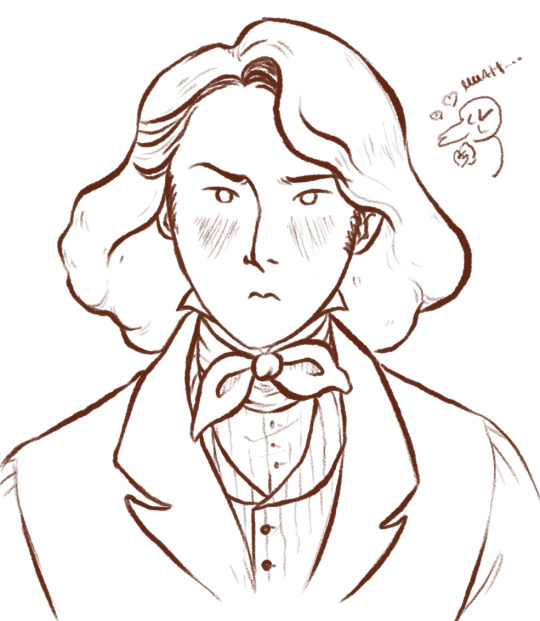

So I drew Enjolras for the first time in a loooong time! I’ve had really bad art block for the better part of the past two years but ahh man! It’s so good to be back to my roots!!!
Hope you like it teehee my style had changed A LOT since I last posted art to this blog :)))
Also peep the little kissy guy in the corner, my friend drew it on my tablet and I didnt have the heart to erase it so I guess it’s a part of the art now
#les mis#les miserables#les miz#les amis de l'abc#the brick#musical theatre#les mis headcanons#enjolras#les mis enjolras#canon era les mis#canon era#enj#les mis fanart
180 notes
·
View notes
Link
Chapters: 27/28
Fandom: Les Misérables - All Media Types, Les Misérables - Victor Hugo
Rating: Explicit
Warnings: No Archive Warnings Apply
Relationships: Enjolras/Grantaire (Les Misérables)
Characters: Enjolras (Les Misérables), Grantaire (Les Misérables), Les Amis de l'ABC
Additional Tags: Canon Era, Museums, Art History, Eventual Smut, Slow Burn, Foils to Lovers, Implied/Referenced Drug Use, Artist Grantaire
Chapter Summary:
Outside, the streets had shaken off the last vestiges of their winter slumber; the café tables were out in force, and full till late into the evening with citizens enjoying the pleasant weather, despite the air of trepidation and uncertainty that the cholera continued to inspire. It was a peculiar mood, though one that might yet be turned towards a greater purpose – a sense of directionless, restless anticipation; a waking and shaking out of the dust and cobwebs of the previous year's disappointments. Life stubbornly persisting, despite it all.
#les mis#exr#exr fic#enjoltaire#canon era#my fic#whats this?#an update??#it's more likely than you think
27 notes
·
View notes
Photo

Grantaire in winter clothes for someone who didn’t leave a url <3
#ko-fi requests#grantaire#les mis#doodle#damn I haven’t drawn him in maybe two years#is this canon era is this modern au u decide
241 notes
·
View notes
Text
Les Mis Canon-era Photos Part 1: The Gorbeau House
In the late 19th century huge chunks of Paris were torn down and rebuilt, in a series of construction projects referred to as “The Haussman Renovations.” So the Paris streets we see in Les Mis often don’t resemble the Paris streets of today….except! Shortly before/during the renovations, a photographer named Charles Marville took a series of photographs of the old city. While he took them thirty years after the events of the story (in 1860) it’s still fascinating to see older Parisian architecture.
The Les Mis readalong just made it to the Gorbeau Hovel, the small hovel where Jean Valjean and Cosette live right after they live the Thenardier’s inn. Hugo tells us the Gorbeau house is located in "the Old quarter of the Marché-aux-Chevaux,” an area that is poor and isolated. Here are Marville’s photographs labeled Marché-aux-Chevaux:
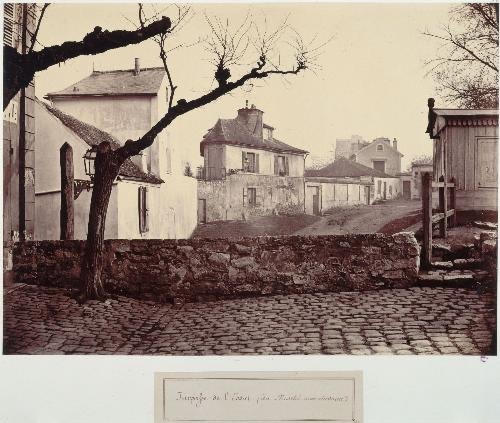
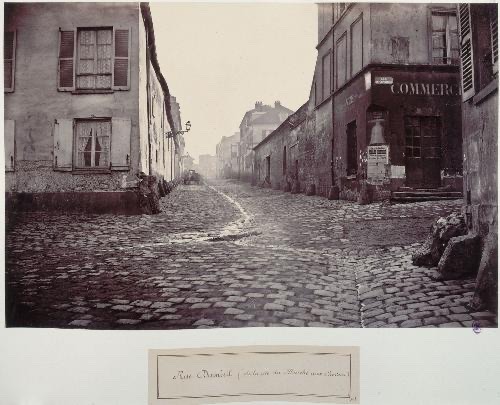
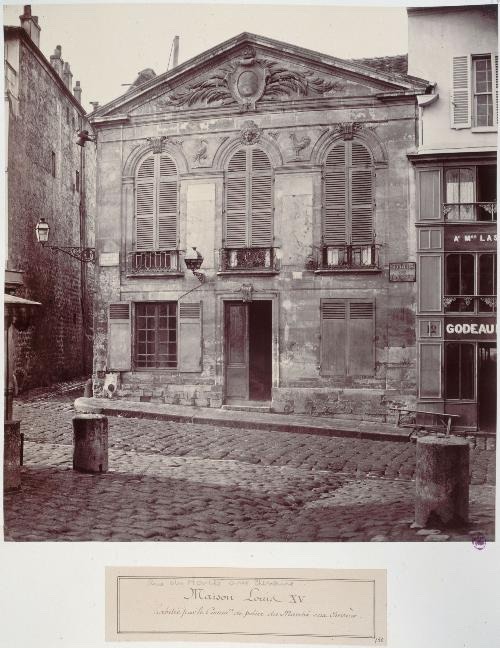



Marville does not have photographs of many of the specific streets Hugo mentions in this chapter. One street he does have, though. Hugo says “Take a few steps, and you come upon that fatal Rue Croulebarbe, where Ulbach stabbed the goat-girl of Ivry to the sound of thunder, as in the melodramas." Marville does have a photograph of the Rue Croulebarbe!

For additional photo reference:
This is not a Marville photograph. But the 1925 silent film adaptation of Les Mis, directed by Henri Fescourt, features a Gorbeau house set that is extremely similar to its depiction in the novel:

104 notes
·
View notes
Text


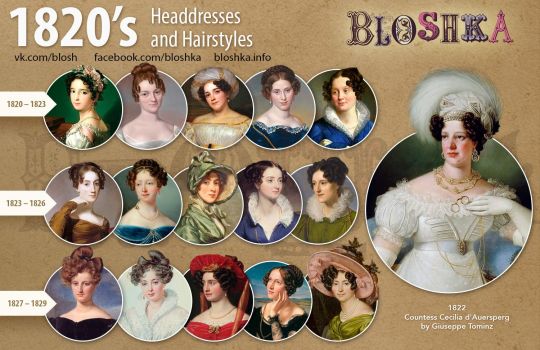
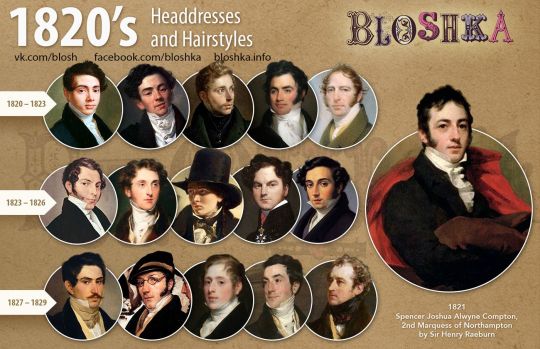
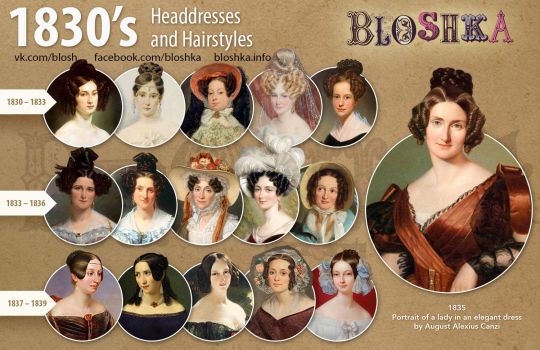

Les Mis canon era hairstyles

Javert's hairstyle as described in the brick with a fringe matches turn of the century styles, when he would have been around 20.
15 notes
·
View notes